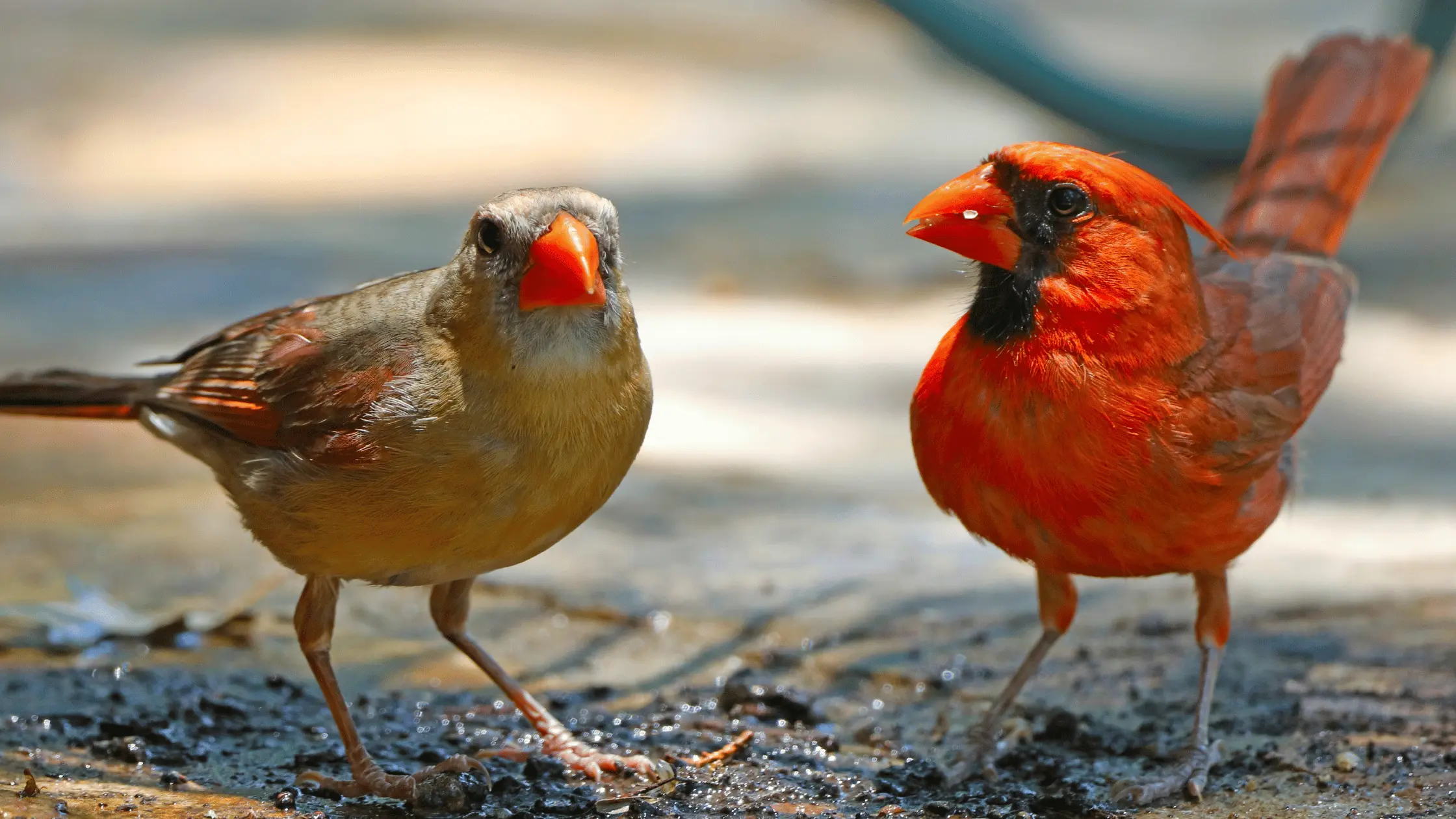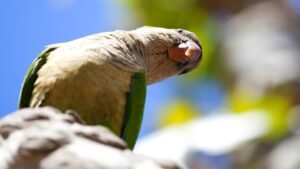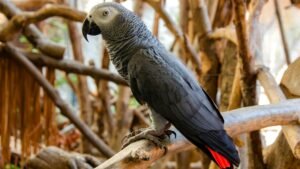Male northern cardinals are red birds easily identified by their red raised crown. On the other hand, the female northern cardinal is in different shades of brown and gray with a distinctive orange beak. The features (especially the raised crown) of the northern cardinal make them easy to identify even by amateur bird watchers.
Even though the northern cardinal is quite a unique-looking bird, several other bird species look like them. Below are my top 15 birds that look like northern cardinals.
- Vermilion Flycatcher
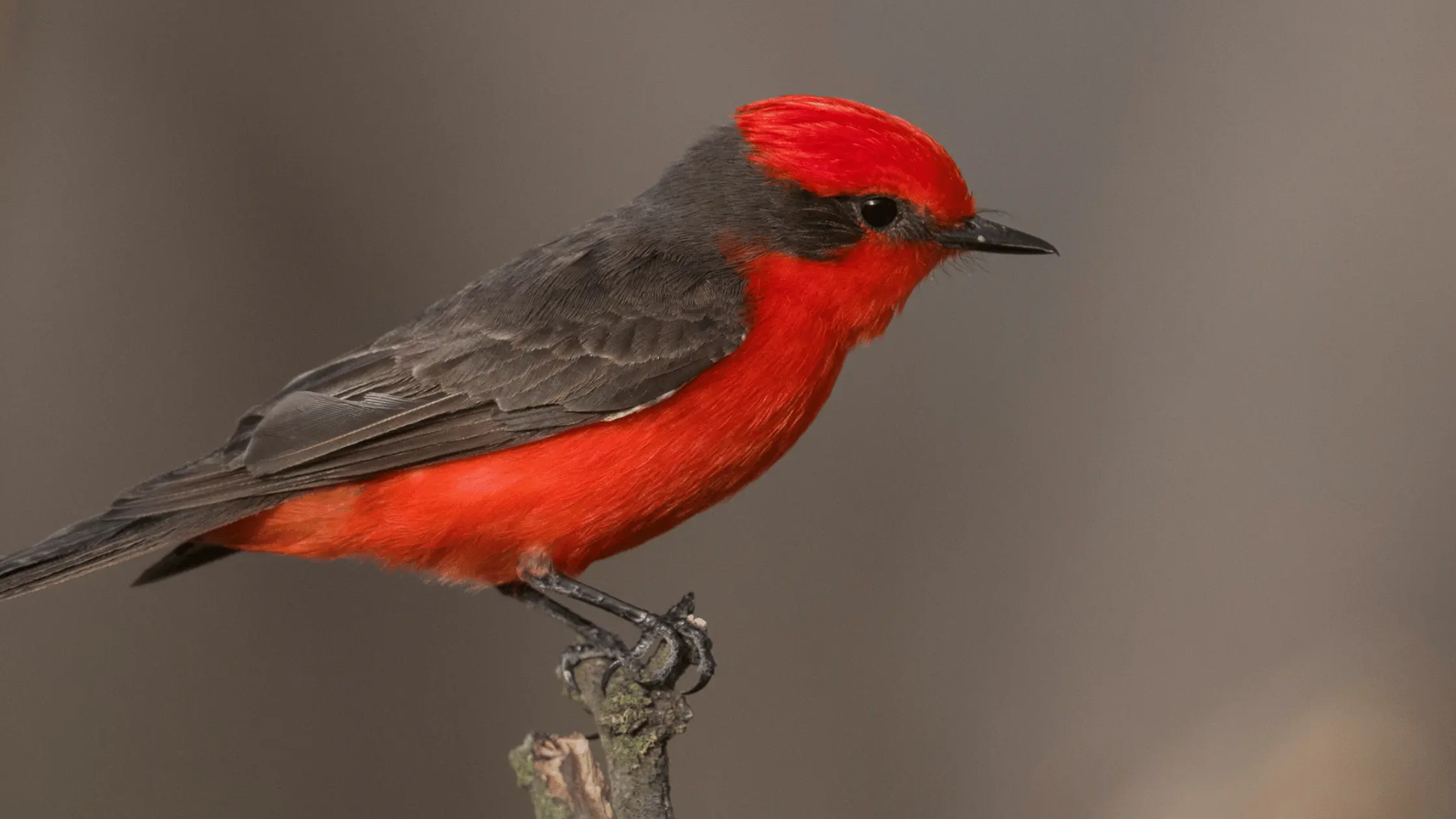
The vermillion flycatcher is a bird that has black wings and a tail. The flycatcher has a tail that is much shorter than that of the cardinal, and it also has a black beak. This bird is named because it catches flying insects from perches and fences. The vermillion flycatcher is common in Central America and a large part of South America.
The vermillion flycatcher is often mistaken for the northern cardinal due to its red color and its black face mask. However, the vermillion flycatcher can be differentiated from the northern cardinal thanks to its face mask, which has a stripe running from the eye around the back of its head.
2. Tufted Titmouse

The tufted titmouse has a crown, so they are often confused with the northern cardinal. But, you can differentiate the tufted titmouse from the northern cardinal because their crown is gray, and their beaks are long and gray. The tufted titmouse mouse has a white face, belly, and chest.
The tufted titmouse has an echoing voice, even though they are tiny. They are common in eastern deciduous forests and regularly come to feeders. If you want to have visits from the tufted titmouse, you should know how to attract them to bird feeders.
3. Summer Tanager
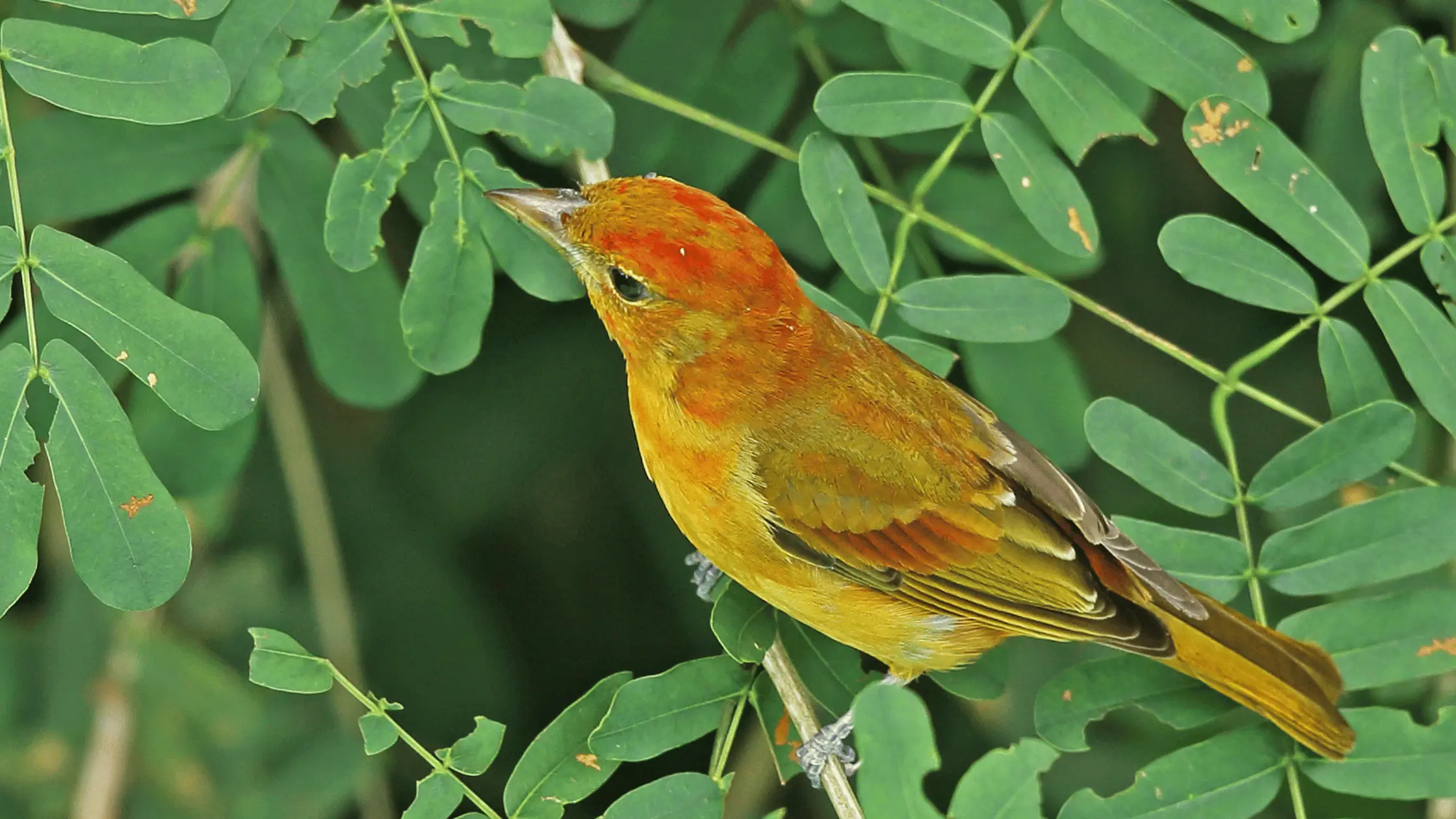
The summer tanager is often confused with the northern cardinal because of its red color. But the summer tanager lacks the raised crown of cardinals, and they are smaller birds than the northern cardinal and lack the black mask that northern cardinals have.
The adult male tanager is the one that has the red color all over. However, the colors of the females are variable. The color of the female can range from bright orange and pale dull yellow. The summer tanager is also mistaken for the American robin because they have similar songs.
4. Scarlet Tanager

The scarlet tanager has a bright red plumage, but it lacks the crown of the northern cardinal. The scarlet tanager also lacks the black mask that is common in cardinals. You can also differentiate between the scarlet tanager and the cardinal bird by their wings. The scarlet tanager has black wings and tails.
The non-breeding scarlet tanager males and females have dark and yellow-olive wings. They were previously placed in the tanager family but are now placed under the cardinalidae family.
5. Rose Finch

Due to their vivid coloring, people occasionally mistake these birds for cardinals. The rest of this bird’s feathers are shades of red, pink, orange, brown, and purple, with a red face and head. The rose finch also has a brown beak. The rose finch belongs to the Fringillidae family.
The rose finch is a sparrow-sized bird, which means they are pretty small. The common rose finch is a rare species, and they can be seen in the northern Isles and the coasts of the eastern coastland, especially in the spring and autumn.
6. Red Crossbill

I don’t know the motive surrounding the naming of this bird, but the red crossbill isn’t red. The red crossbill is more orange-red and the red crossbill also has a brown mask around its eye. The red crossbill also has a thick brown bill that is thicker than the cardinal, and the red crossbill lacks the prominent crown of the cardinal.
The red crossbill belongs to the family Fringillidae, and its mandibles enable them to extract fruit seeds. The red crossbill breeds in mixed coniferous forests in North America and Eurasia. The red crossbill is nomadic, and its range is irregular because they may be in certain areas for years and not in the next.
7. Red-Billed Firefinch
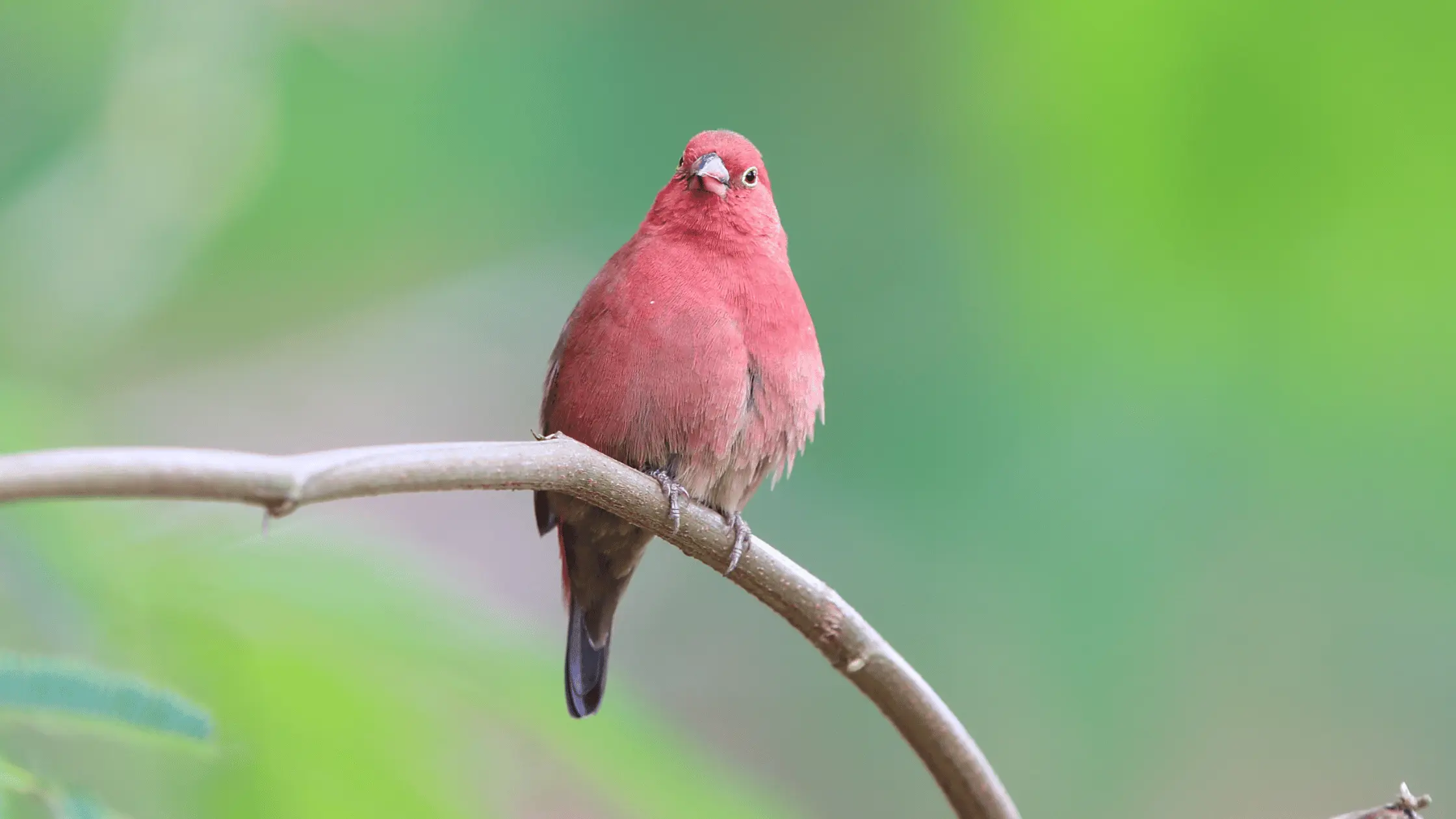
The red-billed firefinch is smaller than the cardinal, even though they are a bit similar in color. The red-billed firefinch is primarily red, but they have brown wings. The red-billed firefinch also lacks the crown of cardinal birds, and their beak is pink.
The male red-billed firefinch has a pink crown, face, and underparts. However, the female of these birds is brown with a tiny pink patch between the bill and eye. The red-billed firefinch often stays in pairs or flocks, and they can be found in grassy savannah habitats where they eat seeds.
8. Pyrrhuloxia
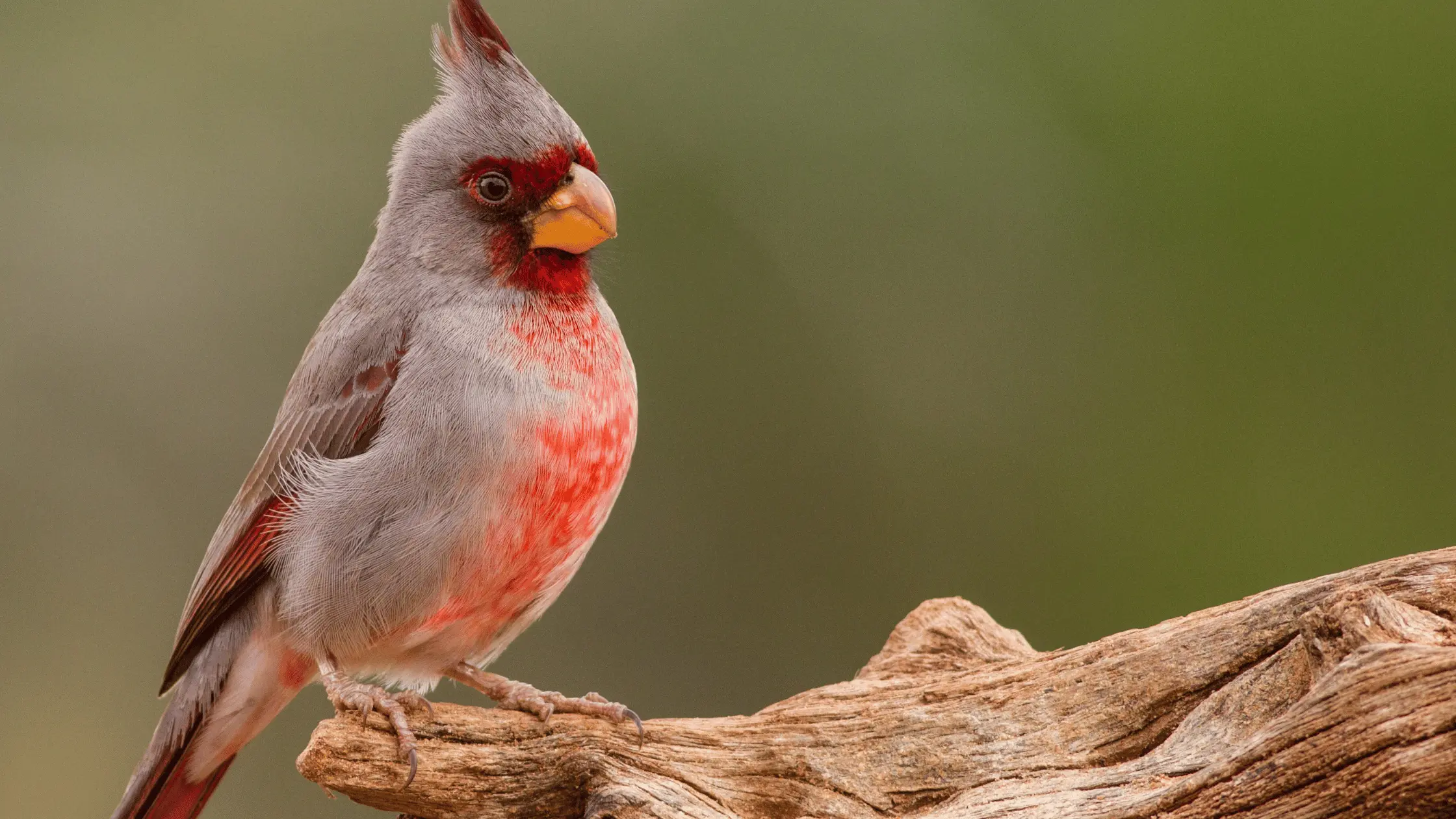
This bird resembles the female cardinal quite a bit because both have distinctive crowns and are roughly the same size and shape. However, there are some differences that I’ve noted.
The pyrrhuloxia is primarily gray with some red and black patches. While the female cardinal wears a black mask, pyrrhuloxia has a red face mask. The pyrrhuloxia has a bright yellow beak, while the cardinal has an orange one.
The pyrrhuloxia dwells in Arizona, New Mexico, and Texas throughout the year. They are also partially non-migratory and may occasionally stray north of their normal range.
9. Purple Finch

The ninth bird on my list is one of my favorite small birds, the purple finch. The purple finch can easily be differentiated from the cardinal because they are smaller and lack the bright red coloring of the cardinal. The purple finch, instead of red plumage, has white and tan. The face of the purple finch is a mix of white, red, tan, and pink.
The purple finch lives in areas that aren’t heavily populated and can be found in mixed and coniferous forests. Also, the purple finch will only flock together when it is winter season in numbers of about 200.
10. Pine Grosbeak

The pine grosbeak looks similar in size to the cardinal, but they lack the bright red plumage of the cardinal. The head, chest, and belly are red. But the wing of the pine grosbeak is a mix of black, white, and red. The pine grosbeak belongs to the finch family and is found in coniferous forests in Alaska, Canada, and The United States.
The pine grosbeak is a frugivore, which eats small fruits like rowans. Coniferous woodlands are the pine grosbeak’s nesting habitat, and they build their nests on horizontal branches. The pine grosbeak will live permanently in most of its chosen range. However, the pine grosbeak may migrate further south in the far north or during times of food scarcity. Both sexes grow gular pouches during the breeding season, which they use to store seeds before feeding them to the young.
11. Phainopepla
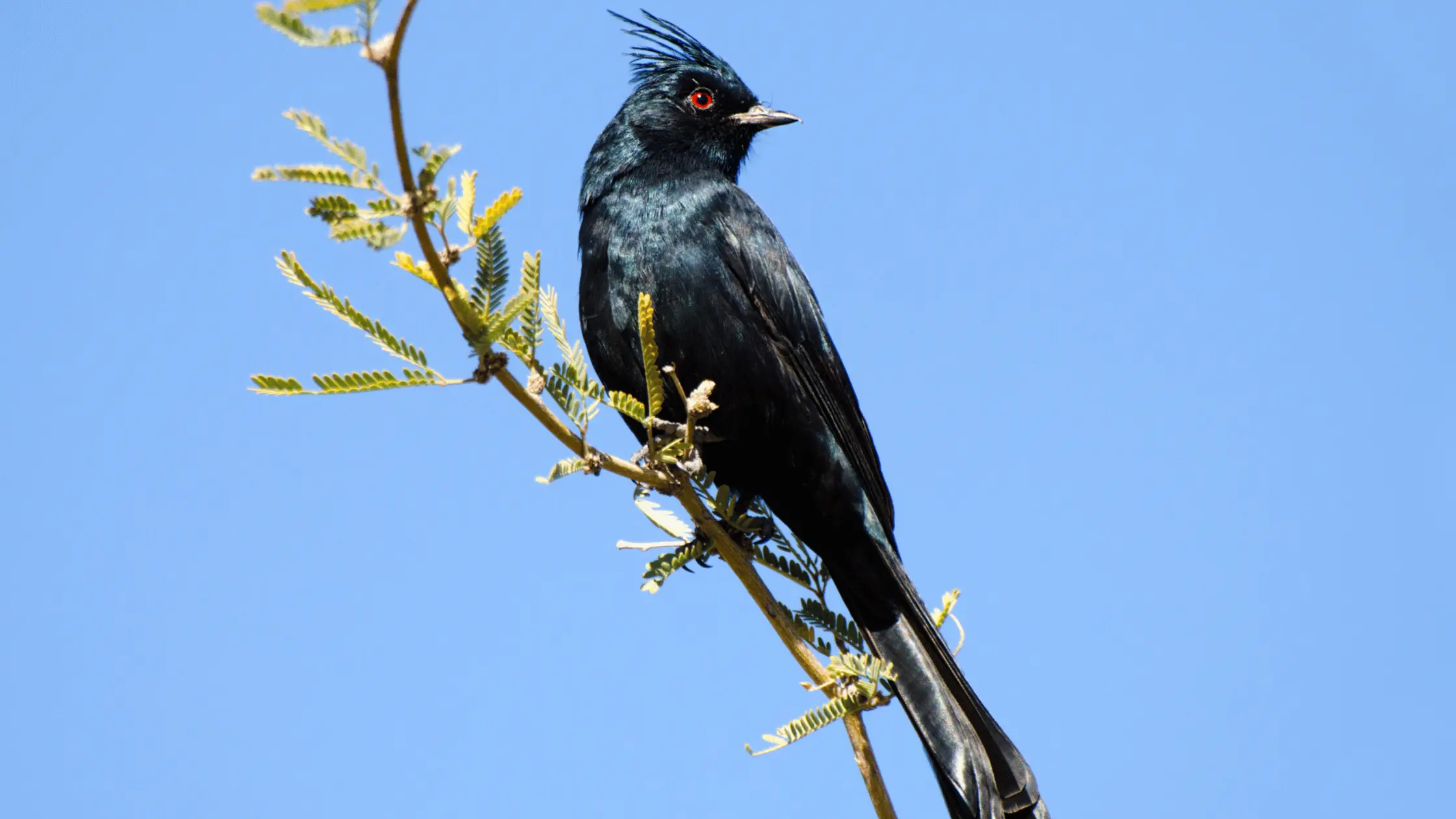
The phainopepla is one of the birds that look very similar to the cardinal and have the same size and shape as the cardinal. The main difference between the phainopepla and the cardinal is that the phainopepla is entirely black. The crown of the phainopepla is also shorter than that of a cardinal.
The phainopepla diet consists of small insects, berries, and vegetables. Did you know that the phainopepla has a specialized mechanism in their gizzard that removes berry skin from the fruit? This allows the skin to separate from the fruit helping the phainopepla to digest their meal easily.
12. House Finch
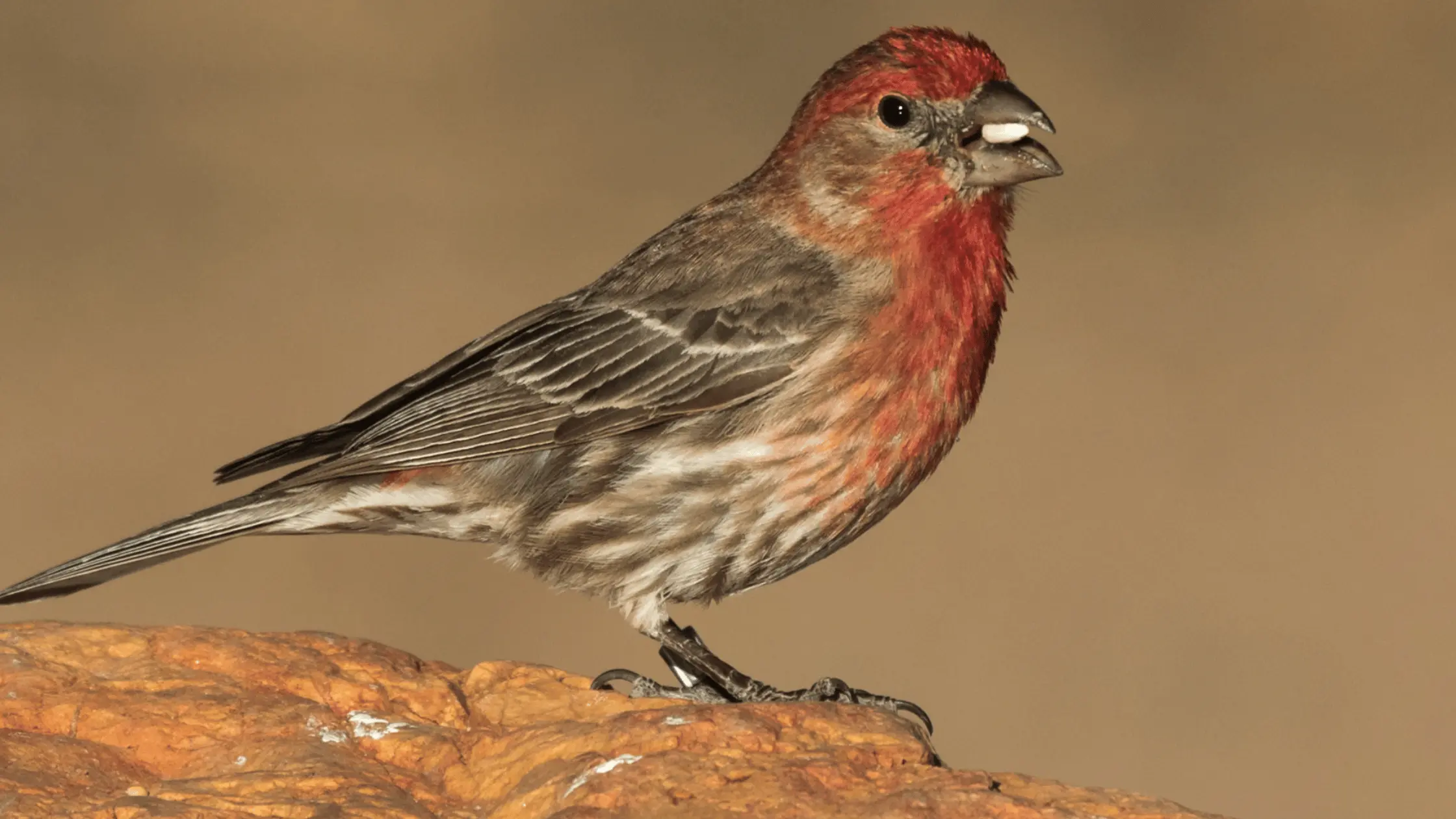
The house finch is another favorite bird of mine that looks like a cardinal. However, the house finch is smaller than the cardinal and lacks the crown typical in cardinals. Even though the house finch has red feathers, it isn’t spread throughout the body like the cardinal.
The house finch’s beak and tails are shorter than a cardinal’s. House finches prefer to live in urban and suburban areas and may occasionally be seen in grasslands, deserts, and coniferous forests.
13. Hepatic Tanager
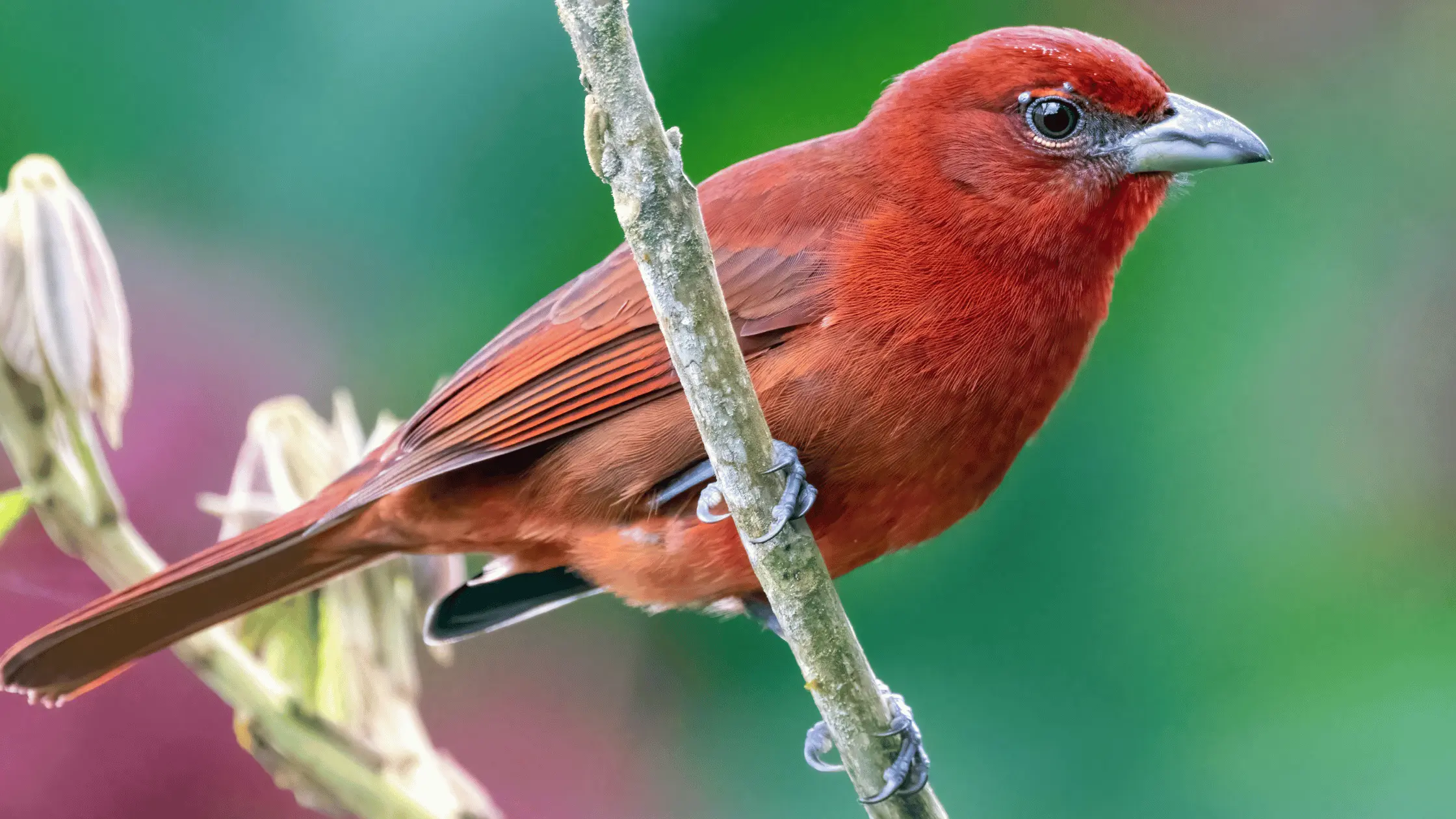
The hepatic tanager is mistaken for cardinals because their males have a reddish appearance. In reality, the male hepatic tanager is more orange than red. The feathers on the back of the hepatic tanager are brown or tan, and they also lack the crown of the cardinal. The gray beak of these birds is more extended and sharper than the beak found on cardinals.
The call of the hepatic tanager is a dry chup similar to the sound a hermit thrush makes. The hepatic tanager searches out its food in the foliage of trees, moving methodologically as it seeks out its daily “bread.”
14. Flame-Colored Tanager
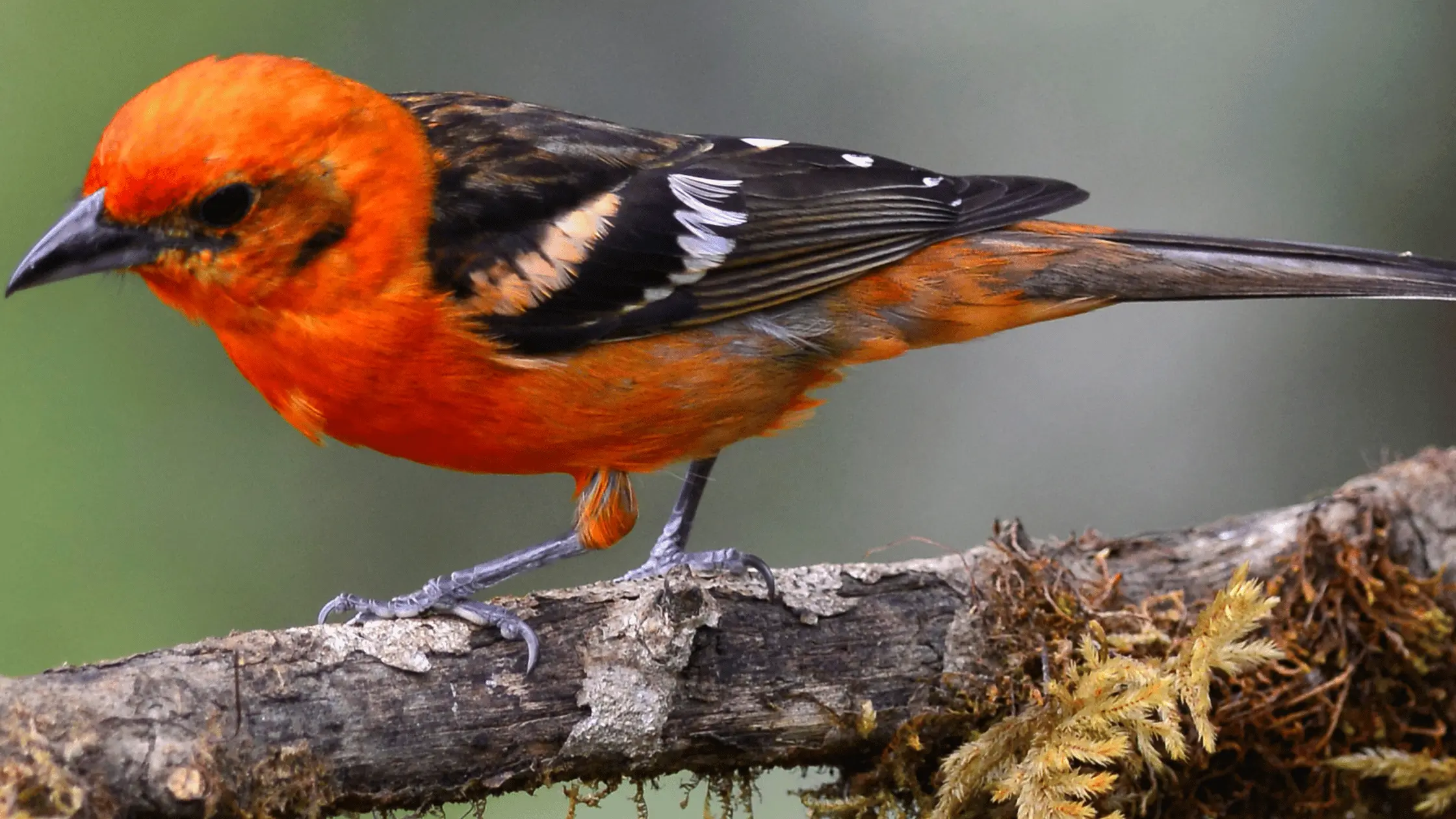
In terms of color, the flame-colored tanager truly lives up to its name. But it does not have the cardinal’s crown and black face mask. The beak of this red bird is black, along with its wings and tail. The flame-colored tanager generally likes to live in the mountains, but it may also be near sea level in Guatemala.
The diet of these flaming red birds is anthropod and berries. They will usually forage in pairs or alone. The flame-colored tanager will hunt at the top but occasionally come near the ground to eat fruit.
15. Cedar Waxwing
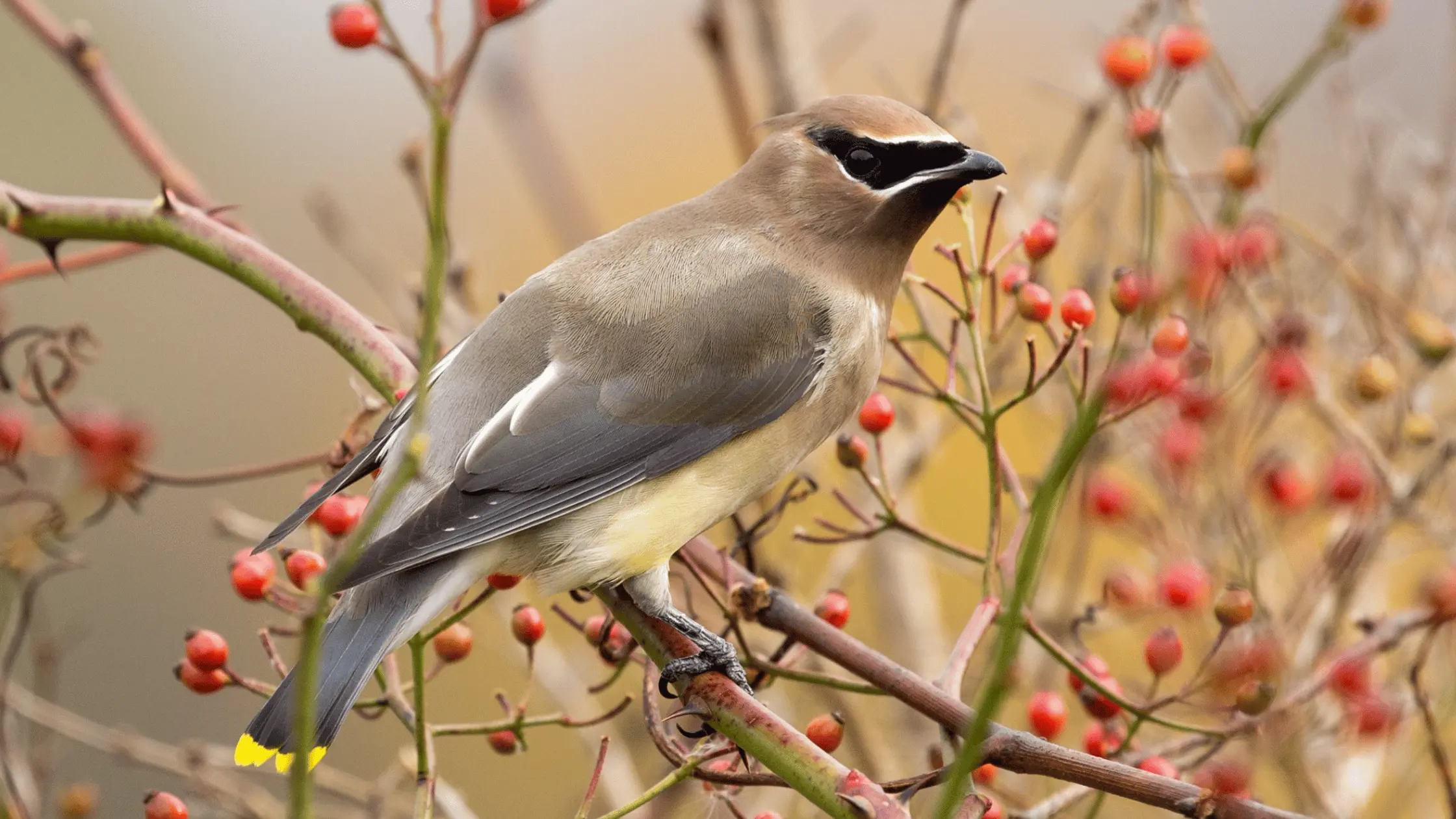
Cedar waxwing likes to live in trees near the edges of wooded areas. The trees the cedar waxwing chooses are usually situated near water and berries. These beautiful birds are attracted to the sound of running water and will bathe and drink from running creeks. That is cute! I love birds that take personal hygiene seriously.
The cedar waxwing’s black face and brown head give it a vibrant appearance. It features a brilliant yellow tip on each end of its tail and a yellow belly and chest. The wings are tan and gray with white and red markings. The cedar waxwing looks like cardinals because of the crown they both have.

